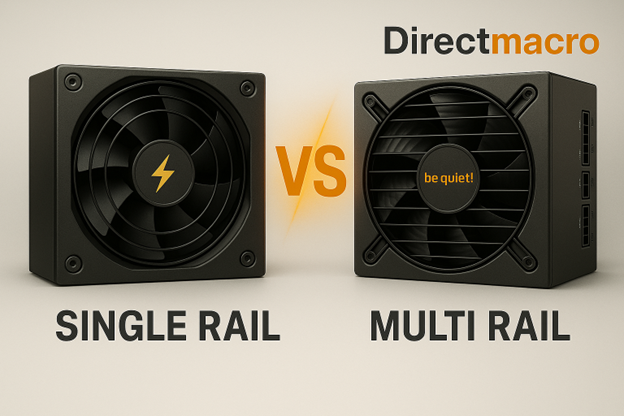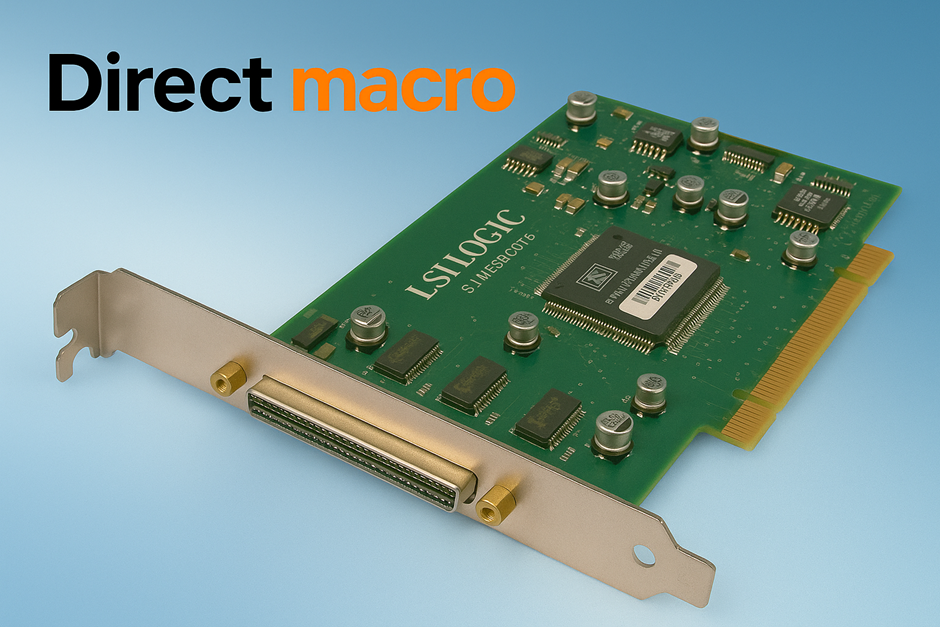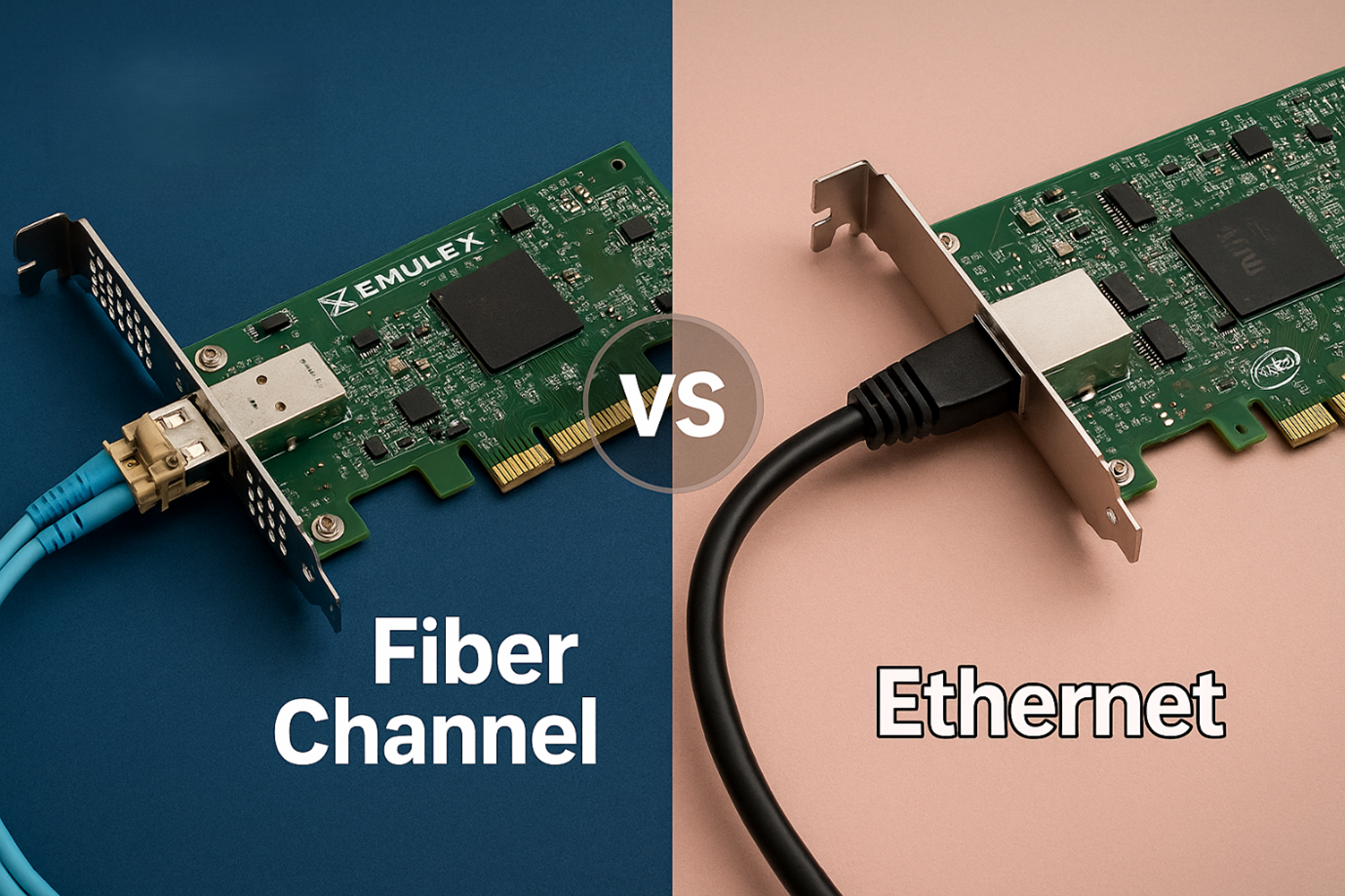Understanding Power Supply Rails: Single vs Multi Rail PSUs
If you have looked into building a computer or high-performance computing, you have come across discussions about power supply unit (PSU) voltage lines, especially about the +12V rail. This guide clarifies the difference between a single rail vs multi rail PSU so that you can make a better decision regarding the right single or multi rail configuration to achieve the best performance and safety for your system.
The Basics: What Are Power Supply Rails?
Before looking into single rail vs multi rail power supply differences, it is vital to define what power supply rails are. Rails are the output channels or voltage lines in a PSU that deliver electrical power at regulated voltages to different components of your PC. There are three main PSU voltage lines, and these are typically the +12V, +5V, and +3.3V rails.
The +12V rail is the most important line in the PSU because it directly powers the most demanding components, such as the CPU and GPU. Also, how a PSU controls the +12V rail determines if it is a single-rail or multi-rail unit, which is essential in understanding power supply rails.
Single-Rail vs. Multi-Rail PSU: The Core Differences
The main difference between what is single rail and multi rail PSU is how the total available power supply amperage on the +12V line is managed and distributed. Understanding the difference between single and multi-rail PSU configurations is as follows:
- Single Rail PSU: The total +12V current capacity is available through one large and unified circuit. It implies that the total power supply amperage is available through one output for maximum power availability without any internal segmentation.
- Multi-Rail PSU: The total +12V capacity is electronically segmented and distributed across multiple smaller and independent PSU voltage lines and virtual rails. Each of these rails has its own dedicated, lower power supply amperage limit.
This fundamental difference directly impacts the power distribution PSU strategy and impacts stability as well as important PSU safety features.
Digging Deeper into PSU Rail Configuration
The perception of independent segmentation in multi-rail PSUs is based on how PSUs implement Overcurrent Protection (OCP), which is a critical PSU safety feature.
In the case of multi rail PSU benefits, each virtual +12V rail can operate within its own specific OCP limit. If the OCP limit of a rail is exceeded, any device connected to that rail will simply turn off to improve and enhance safety. In contrast, single rail PSUs advantage design that typically relies on a single high-amperage OCP for the entire +12V rail. The OCP limit is set much higher to provide simplicity and full power access, which means a fault may draw a larger current before the protection mechanism is triggered. +3.3V and +5V rails are typically more stable and less susceptible to configuration changes.
Quick Comparison
| Feature | Single-Rail PSU | Multi-Rail PSU |
| Power Distribution | One large +12V rail | Multiple +12V rail segments |
| OCP Type | Global for the entire rail | Separate/Individual OCP per rail |
| Power Availability | Full amperage accessible on one rail | Amperage divided among rails |
| Safety Feature Focus | Simplicity and raw power access | Granular PSU overcurrent protection |
| Ideal Use Case | Overclocking, high-performance PSU gaming rigs | Workstations, servers, enhanced safety |
Single Rail vs Multi Rail: Advantages and Benefits
When deciding which is better single or multi rail PSU, it is essential to weigh the specific single rail PSU advantages against the multi rail PSU benefits.
Single Rail PSU Advantages
- Maximum Power Availability: Since all the power supply amperage is on one rail, there is no risk of running into a rail’s OCP limit while other power remains unused, which makes it ideal for high-demand components like top-tier GPUs.
- Simplicity for Overclocking: The unrestricted current capacity is favored by enthusiasts and overclockers who demand consistent, raw power delivery without the complexity of balancing loads across multiple rails. It is often the configuration of choice in high-performance PSU units.
Multi-Rail PSU Benefits
- Enhanced Safety Features: The primary benefit of a multi rail PSU is improved safety. Individual PSU overcurrent protection on each rail makes sure that if one rail has a fault, then only that specific rail shuts down on the component, which isolates the issue. It minimizes the potential damage to components or the PSU itself.
- Improved Power Supply Stability: Since the load on individual circuits is lower, it is more likely that the multi-rail PSU will contribute to the overall power supply stability, which prevents a major voltage fluctuation when a single component experiences a momentary power spike.
- Effective Power Distribution: Multi-rail configurations naturally enable more even power distribution from the PSU across the different components in a system.
Which Is Better: Single or Multi Rail PSU?
If you are thinking, “Which is better single or multi rail PSU?” Then it does not have a universal answer. It totally depends on what kind of system you have and what is your system priorities are.
- Choose a Single-Rail PSU If: You run a high-performance PSU setup and frequently overclock or looking for maximum and unrestricted power supply amperage for a single component such as a high-end GPU. If you prioritize simplicity and raw power delivery over granular and internal safety segmentation.
- Choose a Multi-Rail PSU If: Your priority is enhanced safety features and power supply stability. Multi-rail units are often preferred in professional workstations, servers, or any system where the continuous, safe operation of multiple high-draw components is critical.
In short, no matter which option you choose single rail vs multi rail PSU, the quality of the unit and the robustness of its overall PSU safety features, including over-voltage, under-voltage, and short-circuit protection, matter immensely.
PSU Installation and Rails: Tips to Remember
Keep these important tips in your mind before any PSU installation in your system, especially when choosing between single and multi-rail. These tips help you to make the right decision about whether you need to install single rail PSU or multi rail PSU.
- Check The Amperage Requirements: Always verify that the total +12V rail amperage of your chosen PSU (regardless of rail configuration) meets the requirements of your CPU and GPU combined.
- Cable Management for Multi-Rail: For multi-rail units, ensure proper load balancing during PSU installation. If possible, avoid connecting all high-draw components to a single rail to make sure the PSU has optimal power distribution.
- Invest in Quality: A high-quality and high-performance PSU with strong PSU safety features will offer better power supply stability and longevity, irrespective of its internal PSU rail configuration. So, invest in quality and high-performing PSUs that offer security to your system.
Wrapping It Up: Making an Informed Decision
Knowing how power supply rails work is essential to building a stable, safe, and efficient computer system. The choice between single rail vs multi rail PSU (power supply unit) is a significant aspect of system design. It involves a balance between raw power accessibility and PSU safety features.
- Single-rail PSUs offer maximum and unrestricted power supply amperage on the +12V rail, which simplifies setup and appeals to enthusiasts and overclockers seeking high-performance PSU capability.
- Multi-rail PSUs prioritize power distribution and PSU safety through individual PSU overcurrent protection (OCP) circuits for each rail, leading to excellent power supply stability and greater protection for sensitive components.
The best configuration is the one that aligns with your specific needs. You can confidently make an informed choice after analyzing the demands of your hardware component and prioritizing either simplicity, maximum power (single rail), or enhanced safety and load distribution (multi-rail). Investing in a quality unit with strong PSU voltage lines and comprehensive PSU safety features will ensure your PC operates safely and efficiently for years to come.
To receive swift and dependable assistance for all your computer parts requirements, call us at (855) 483-7810, or get in touch with our specialized team for bulk order inquiries by completing a submission form.
Frequently Asked Questions (FAQs)
1. What is the difference between single rail and multi-rail PSU?
The key difference between single and multi-rail PSUs lies in the power distribution of the PSU on the +12V rail. A single-rail power supply offers every amp on one circuit. A multi-rail PSU divides the +12V total into smaller pieces, which allows for separate protective rail overcurrent PSU control.
2. Which is better, a single- or multi rail PSU, for gaming?
For high-end gaming rigs, the answer to which is better, single- or multi rail PSU, often depends on component demands. Single-rail PSUs are frequently preferred for high-performance PSU setups with powerful, single-GPU cards, as they ensure the GPU has access to the maximum required current without tripping a lower OCP limit. However, a quality multi-rail PSU is excellent for general gaming and provides superior PSU safety features.
3. What do the +3.3V and +5V rails power?
While the +12V rail powers the major components like the CPU and GPU, the +3.3V and +5V rails are essential for smaller and lower-power components. The +5V rail typically powers devices like SSDs and HDDs (data control boards) and older peripherals; on the other hand, the +3.3V rail mainly serves components like RAM modules and some motherboard circuitry. The configuration of the +12V rail (single vs. multi) does not typically affect these other power supply rails.
4. Can a single-rail PSU be dangerous?
A well-designed and high-quality single rail PSU with proper overall PSU overcurrent protection is not inherently dangerous. However, because its OCP limit is set very high to allow full current access, a catastrophic failure or short circuit could potentially draw more current before the unit shuts down compared to a multi-rail unit. The safety of either configuration depends largely on the PSU’s overall quality and adherence to industry standards.
5. Does choosing between single and multi rail affect PSU installation complexity?
Choosing between single and multi rail primarily affects internal power management, not the physical PSU installation. However, a multi-rail PSU requires more care during cable connection (load balancing) to ensure high-draw components are not all connected to the same virtual rail, which can be a consideration during the final stage of PSU installation.
Do you need advice on buying or selling hardware? Fill out the form and we will return.

Sales & Support
(855) 483-7810
We respond within 48 hours on all weekdays
Opening hours
Monday to thursday: 08.30-16.30
Friday: 08.30-15.30








